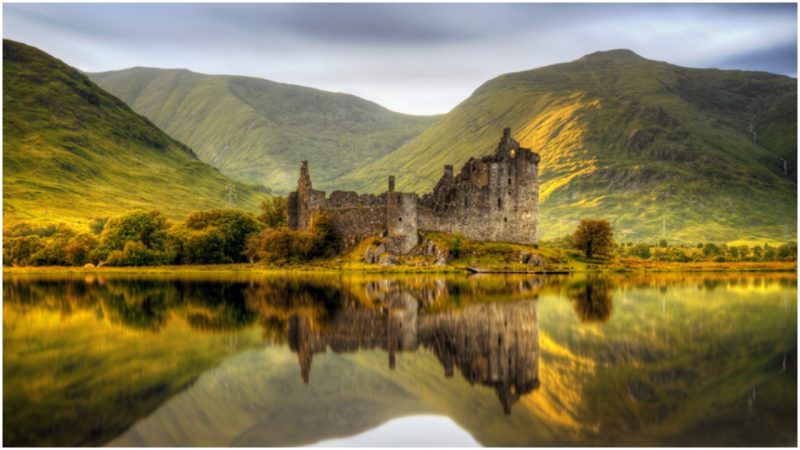Situated on a small island in Loch Awe in Scotland, Kilchurn Castle consisted of structures built from the 15th century through to the 17th century.
As with many other castles, Kilchurn is a place with a long and vibrant history, a few obscure and eerie stories, and an astounding landscape that surrounds it on all sides.
The first record of the castle was in a charter dated March 1449, entitled “apud Castrum de Glenurquhay,” which would translate as “at the castle of Glenurquhay.” The building resembled the ancestral home of the Campbells of Glen Orchy, who later became the Earls of Breadalbane (the Breadalbane family line of the Clan Campbell).
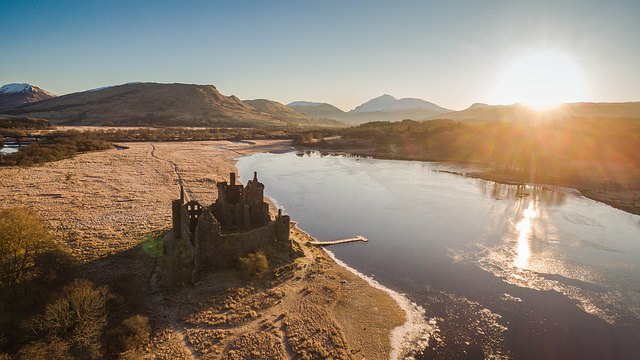
The original constellation of structures comprised of the courtyard and a five-storey tower house which contained a hall, private chamber, a cellar, and of course, a prison. It was Sir Colin Campbell, first Lord of Glenorchy, who initiated the building of the tower in the 1400s. He also raised the defenses by encompassing the courtyard with an outer wall.
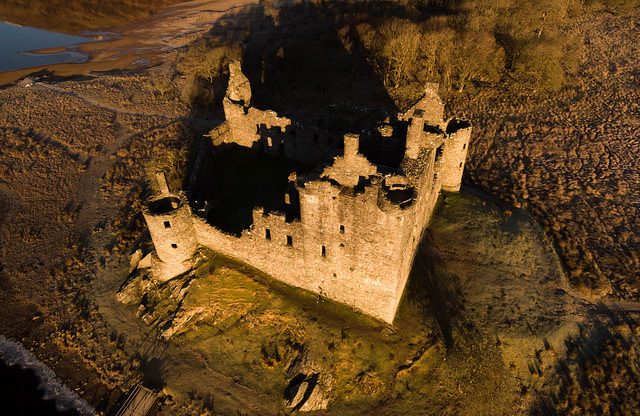
In 1432, Colin, the second son of Duncan Campbell, was granted Glenorchy, at the north end of Loch Awe. This was done to ensure Colin’s loyalty after the unexpected death of his elder brother, Gillespic. The “Laich hall” (Looks onto Loch Awe) was then added by Colin’s son Duncan, the 2nd Lord. He built the hall in the courtyard before he lost his life at the Battle of Flodden in 1513.
Further extensions of the primary castle features were built throughout the 1500s when a hall was added to the south side. More building took place in the 16th and 17th centuries. Four notable angle-turrets on the top of the tower house were added by Colin, the 6th Lord. He was also responsible for relocating the Campbells of Glenorchy from Kilchurn to their new residence of Balloch, in Perthshire. He passed away in 1583.
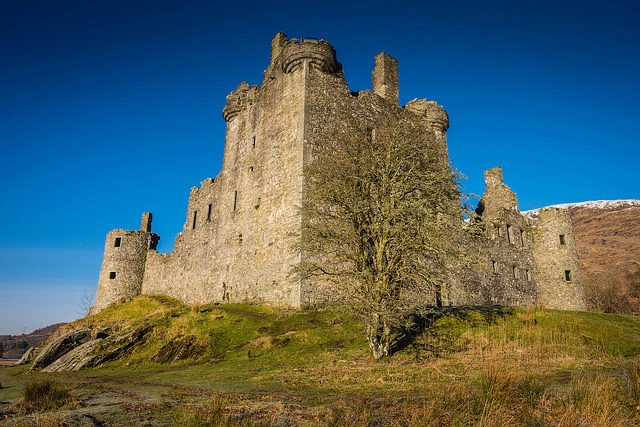
The castle found a new purpose in 1689 when Sir John Campbell of Glenorchy, 1st Earl of Breadalbane, retired to his ancestral seat and arranged to convert the castle into a garrison stronghold. At this point, the tower house was changed to accommodate officers, while a barracks with the capacity to house 200 men was erected on the north side of the courtyard. To date, the barracks block remains relatively intact and counts as the oldest surviving barracks on the British mainland according to Historic Environment Scotland.
The castle was taken under the control of a government garrison during the 1715 and 1745 Jacobite uprising. Nevertheless, as an outpost, it saw little use. By 1740, the Campbells were already residing at their new home at Taymouth Castle, so they attempted to sell Kilchurn to the government but failed.
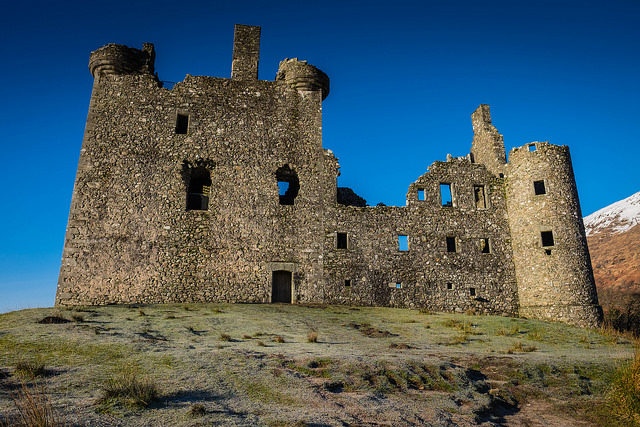
Perhaps one of the most interesting parts of the castle’s history took place in 1760 when Kilchurn was struck and badly damaged by lightning and was ultimately abandoned. The remains of the turret from atop the tower which is now scattered upside-down in the center of the courtyard, are a testimony of the violent event in 1760.
The castle was never renovated after the disastrous lightning strike, and sadly, it quickly began to decay. During the following years, its roof fell in and the castle ruins eventually became a source of free construction materials for other nearby landowners.
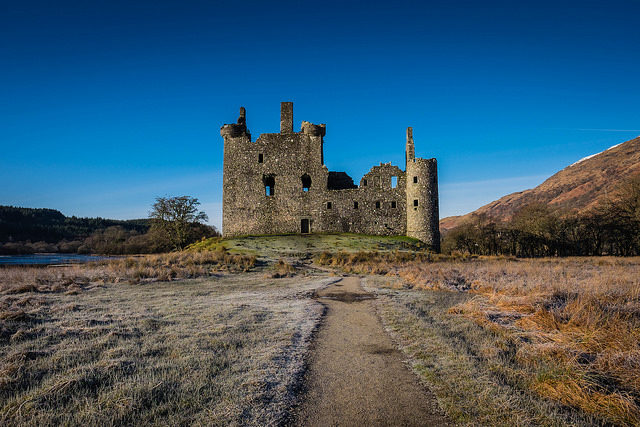
In the early 19th century, the island became connected with the shore as the water level of Loch Awe dropped, and this was the first time in history that the castle was accessible by land. At the current time, the castle still stands on the long peninsula. MacGibbon and Ross, two notable Scottish architects of the 19th century, studied the complex sometime around 1887, after which restoration works were set up and had seemingly altered some of the castle’s original characteristics.
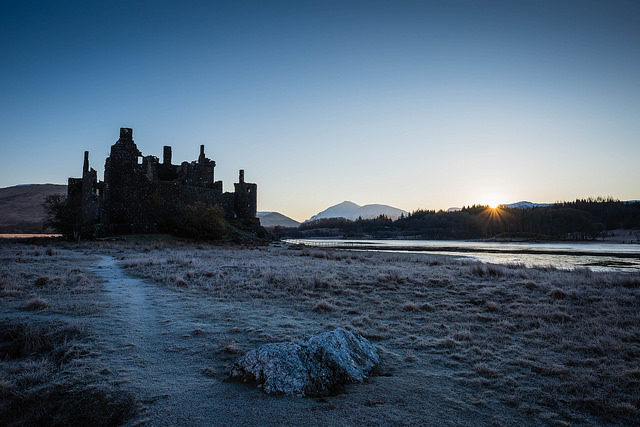
The ruin is now in the care of Historic Scotland and can be visited by the curious explorer throughout the summer. Considered a nationally significant site, Kilchurn Castle is also a scheduled monument of the United Kingdom.
Read another story from us: Some the world’s most beautiful castles
However, if you decide to visit this wonderful site, note that many castle visitors have already heard a pitiful ghostly voice crying out for help as they have explored the ruins. According to legend, the cries are those of a child who was locked away in a room high up in the castle at some point in its long existence.
